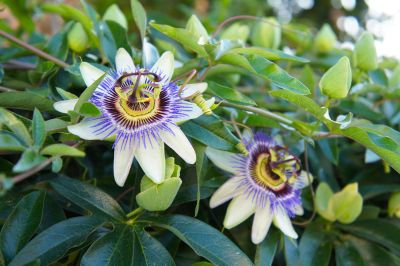Propagating Passion Flower Seeds
Passion flower seeds are best germinated while fresh, or straight from the fruit. They do not store well and will usually go dormant for up to a year. To break dormancy and improve germination for seeds that have been stored a while, you can simply take a piece of fine sandpaper and lightly rub one or both sides of the seeds. Then soak the seeds in lukewarm water for about 24 hours. Throw out any seeds that are floating, as they are no good. Press the remaining seeds about ¼ inch (0.5 cm.) into moist potting mix or peat compost—whatever you use should drain well. Cover with ventilated plastic to maintain humidity and remove once germination begins within two to four weeks. (Note: Older seeds can take anywhere from four to eight weeks or even longer to germinate.) Keep seedlings out of direct sunlight until they develop their second set of leaves. Don’t expect instant blooms with seed-grown plants. Some passion flower species can take up to ten years to bloom.
How to Root Passion Flower Cuttings
Stem cuttings are normally taken during the softwood stage, when they can break off easily when bent. Use a sharp pair of pruners and clip off about 4- to 6-inch (10-15 cm.) cuttings just below the node. Strip off the bottom-most leaves and tendrils and then dip the ends in rooting hormone. Stick the cuttings about half an inch (1 cm.) into well-draining potting mix or an equal mix of sand and peat. Lightly water and then cover with a clear, ventilated plastic bag. Include stick supports if necessary. Place the cuttings in a shady location, keeping them warm and moist. You should notice new growth within a month, at which time you can gently tug on the cuttings to test their root establishment. Once significant rooting has occurred, they can be transplanted to their permanent locations.
How to Propagate Passion Flowers by Layering
You can also propagate passion flowers by layering. This technique is usually performed in late summer by stripping the leaves from a small section of the stem and then bending it over, partially burying it in the soil. Anchoring it in place with a small stone may be necessary. Water well and, within a month or so, it should begin rooting. However, for better results, you should keep the piece in place throughout fall and winter, removing it from the mother plant in spring.
